Fix: Windows Update Error 0x8024402f
Microsoft releases Windows updates quite frequently. Most of these updates contain fixes and the latest features. However, sometimes you might see an error while trying to install/download Windows Updates. The error message that you’ll see will be something like this

This error message will prevent the user from updating Windows.
This error occurs when some of the CAB files get corrupted. There can be multiple reasons for corruption but most likely one is that your ISP has cached the Microsoft Updates (so it doesn’t have to download it over and over) and some of those files got corrupted.
Make sure your Antivirus application is turned off or disabled. Every antivirus application has a disable option in its main panel or settings. Antivirus applications have known to cause issues with the Windows Updates.
Windows on Troubleshooter has worked for a few users. Since it is a lot easier to use the Windows Troubleshooter tool, we will suggest you try this tool first. If it does solve your issue then there is no need to go through the complicated steps given below. Click here and download the Windows Troubleshooter. Once the file is downloaded, run it and follow the on-screen instructions. If this doesn’t solve your issue then keep going.
But before moving on with the solutions, make sure the date and time setting of your system is correct. Also, if you are using more than one network card, then disable the card which is managing internal traffic and leave the other one on, which connects the system to the Internet. If you are using .NET Framework, then either uninstall it or update it. Also, try to disable IPV6 of your system.
Method 1: Reset Windows Update Components
The first thing that you should do is reset your Windows Update Components. This has worked for a lot of users and it fixes the issue 99% of the time.
The very first thing you need to do is stop BITS, Windows Update, and Cryptographic services. Follow the steps given below to stop these services.
- Press Windows key, type command prompt in the Windows Search box.
- Right-click command prompt from the search results and select Run as administrator.

Open Command Prompt as Administrator - Type net stop bits and press Enter
- Type net stop wuauserv and press Enter
- Type net stop appidsvc and press Enter
- Type net stop cryptsvc and press Enter

Run Commands in Command Prompt - Now navigate and delete the contents of the following folder:
C:\Windows\SoftwareDistribution\Download
- Now, you have to delete a .dat file. To delete this file, type
Del "%ALLUSERSPROFILE%\Application Data\Microsoft\Network\Downloader\qmgr*.dat"
and press Enter
- Type
cd /d %windir%\system32
and press Enter. This will change your directory. We are doing this because we have to re-register a lot of BITS and Windows files.
- Type regsvr32.exe atl.dll and press Enter.

DllRegisterServer Succeeded - Now, you have to register a lot of files. We will give you a list of commands. Simply type them one by one and press Enter after typing every single command. Note: If you see an error after running a command then simply ignore the error and move to the next command. Type each of the commands given below and press Enter after each of them.
regsvr32.exe urlmon.dll regsvr32.exe mshtml.dll regsvr32.exe shdocvw.dll regsvr32.exe browseui.dll regsvr32.exe jscript.dll regsvr32.exe vbscript.dll regsvr32.exe scrrun.dll regsvr32.exe msxml.dll regsvr32.exe msxml3.dll regsvr32.exe msxml6.dll regsvr32.exe actxprxy.dll regsvr32.exe softpub.dll regsvr32.exe wintrust.dll regsvr32.exe dssenh.dll regsvr32.exe rsaenh.dll regsvr32.exe gpkcsp.dll regsvr32.exe sccbase.dll regsvr32.exe slbcsp.dll regsvr32.exe cryptdlg.dll regsvr32.exe oleaut32.dll regsvr32.exe ole32.dll regsvr32.exe shell32.dll regsvr32.exe initpki.dll regsvr32.exe wuapi.dll regsvr32.exe wuaueng.dll regsvr32.exe wuaueng1.dll regsvr32.exe wucltui.dll regsvr32.exe wups.dll regsvr32.exe wups2.dll regsvr32.exe wuweb.dll regsvr32.exe qmgr.dll regsvr32.exe qmgrprxy.dll regsvr32.exe wucltux.dll regsvr32.exe muweb.dll regsvr32.exe wuwebv.dll
- Once done, you have to reset the Winsock. Type netsh winsock reset and press Enter
- Type netsh winhttp reset proxy and press Enter
- Now, we have to restart all the services that we stopped at the beginning of this section.
- Type net start bits and press Enter
- Type net start wuauserv and press Enter
- Type net start appidsvc and press Enter
- Type net start cryptsvc and press Enter
Now, restart and try to install the Windows Updates again
Method 2: Change Windows Update Settings
Although we aren’t sure why changing some specific settings from the Windows Settings panel solves this issue but it seems to work for plenty of users. So, follow the steps given below to change the update settings from Windows Update.
- Hold the Windows key and press I to open the Settings app.
- Click Update & Security

Open Update & Security - Click Advanced Options

Open Advanced Options - Uncheck the option Give me updates for other Microsoft Products when I update Windows

Note: In some cases, you might not be able to change this setting (as you can see it is disabled for me). You should just skip to the next method if that’s the case
That’s it. Once done, your problem should be solved.
Method 3: Change Proxy Settings
Changing the proxy settings has worked for a lot of users. Since the problem can be caused by ISP’s corrupt cache, changing the proxy settings works. Although the usual way of changing the proxy is to change it via the Windows Settings page. But that page doesn’t work for every user. A lot of users mentioned that it doesn’t update the Proxy settings. However, you can still try to change the settings via the Windows Settings. If that doesn’t work then move to the next section within this method. The second section requires command prompt so that might be a bit technical for a lot of users. So, we will advise you to use the Windows Settings first because there’s no need to deep into the command prompt if you can solve the issue with just a few licks.
Follow the steps given below to change the proxy settings via the Windows Settings
- Hold the Windows key and press I to open the Settings app.
- Select Network & Security

Open Network & Internet Settings - Click Proxy from the left pane.
 Open the Proxy Settings
Open the Proxy Settings - Turn On the option Use a proxy server
- Type the Proxy Server IP Address and Port number
- Click Save and try again.

If the above steps didn’t solve the issue then do the following:
- Press the Windows key, type command prompt in the Windows Search box.
- Right-click command prompt from the search results and select Run as administrator
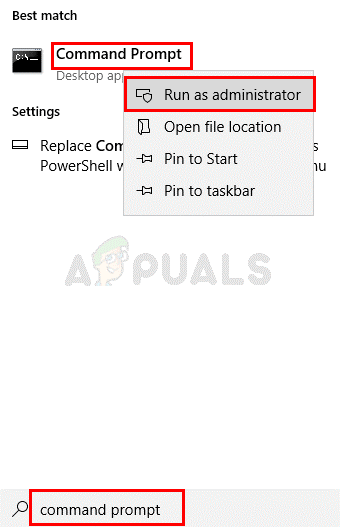
Open Run Command Prompt as Administrator - Type netsh winhttp show proxy and press Enter
- This will show you the current proxy settings

Run netsh Commands in Command Prompt - Now, you have to change the proxy settings via command prompt
- Type
netsh winhttp set proxy proxy-server=”your address”:”port number”
and press Enter. Type the Proxy server IP address in your address part and type the port number in the port number part. Don’t forget to remove the quotes as well. In the end, it should look like this
netsh winhttp set proxy proxy-server=123.154.165.11:8080
This should change your proxy settings and your Windows updates should work fine.
Method 4: Change Windows Update Service
Setting the Windows Update Service to Delayed Startup has been fruitful for a lot of users as well. So, if nothing else works then you should give this a go as well.
- Hold Windows key and press R to open Run box command
- Type services.msc and press Enter
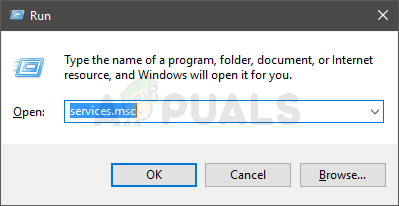
Run services.msc Command - Locate and double click the Windows Update service.
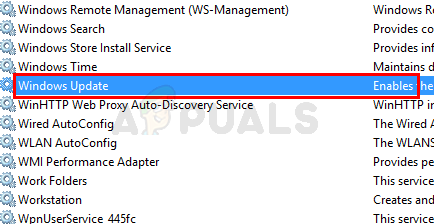
- Select Delayed Start from the drop-down menu in Startup Type

Select Automatic (Delayed Start) for the Service - Click Start if the Service Status is stopped
- Click Apply then select Ok

Once done, try to update the Windows. It should work fine now.
Method 5: Remove Temporary files
If any of the updates got corrupted while in the downloading phase, then your system may show the Windows Update error 0x8024402f. This usually happens when new updates, which are being installed either get corrupt or are interrupted either manually by the user or because of network problems. In this case, we will try to remove the temporary files in your system. When the system notices that these files are missing, it will automatically replace the files.
- Delete the temporary files of your system.
- Now run the updates to check if you can update the system without any issue.
Method 6: Try Another Network or Use VPN
ISPs use different techniques to control web traffic and safeguard their users. Also, they create a cache for the webpages/files visited/downloaded by users again and again. If your ISP is creating the problem, then trying another network may solve the problem. You can also use a VPN. Moreover, you can use your mobile phone’s hotspot to connect your system to the Internet.
- Connect to another network or Use VPN (not recommended). If you are going to use your mobile phone’s hotspot, then keep an eye on the size of the update to be downloaded.
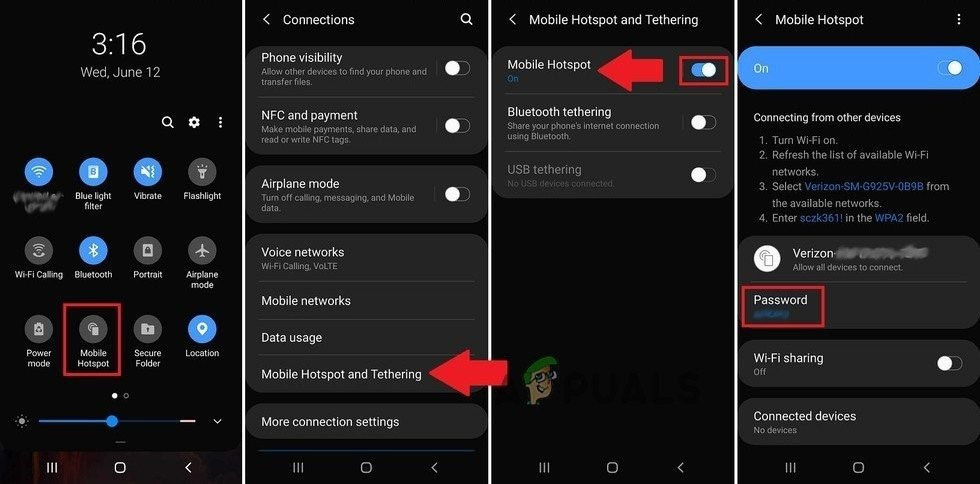
Turn On Mobile Phone Hotspot - Now run the Windows update to check if it can be completed without any issue.
Method 7: Change DNS of Your System
Your network’s DNS values can cause errors with Windows Update. Domain Name System is the main component when connecting with remote addresses. It resolves the said URL to a specific IP address which is then forwarded to different ports for the establishment of the connection. Here, we can try changing to a public DNS server like Google DNS may solve the problem.
- Change the DNS server for your network.
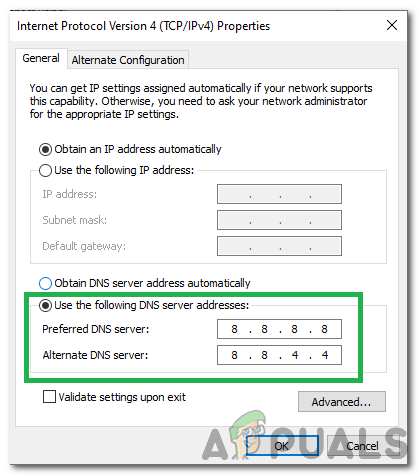
Changing the DNS Server settings - Now check if you can update your system without any issue.
Method 8: Check Your Hardware/Router Firewall
If nothing has helped you so far, then it is time to check your router’s/hardware firewall as these are known to apply different techniques to safeguard and route traffic. These settings can cause the Windows update 0x8024402f error.
As there are a lot of makes and models of the routers/hardware firewalls, it is practically impossible to give guidelines relating to every piece of hardware. But general guidelines are as under (you can find details in the manual of your device):
- Disable AMP service of Meraki Firewall.
- Disable ActiveX blocking/filtering feature of your router.
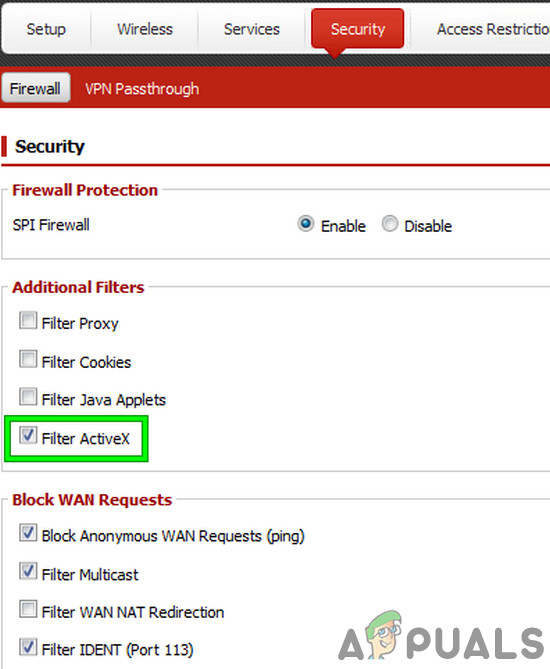
Disable ActiveX - Add microsoft.com and microsoftupdate.com to the whitelist of your router/hardware firewall.
- Update firmware of your device to the latest.
- Reset your modem/router/gateway/router to their default settings.
If none of the above methods work, you can try installing a fresh version of Windows altogether. This will remove all the corrupt files present. If you install an older version of Windows, consider checking for updates immediately.





